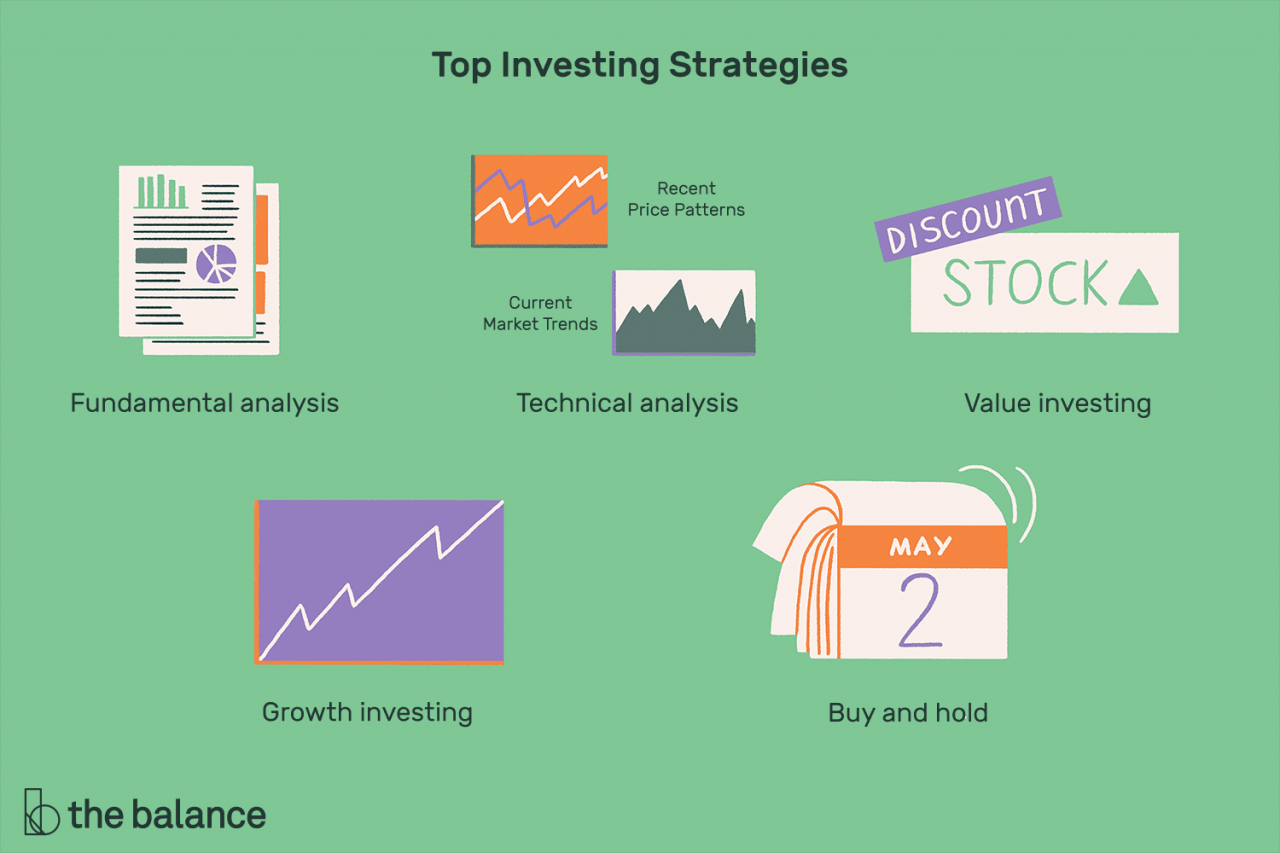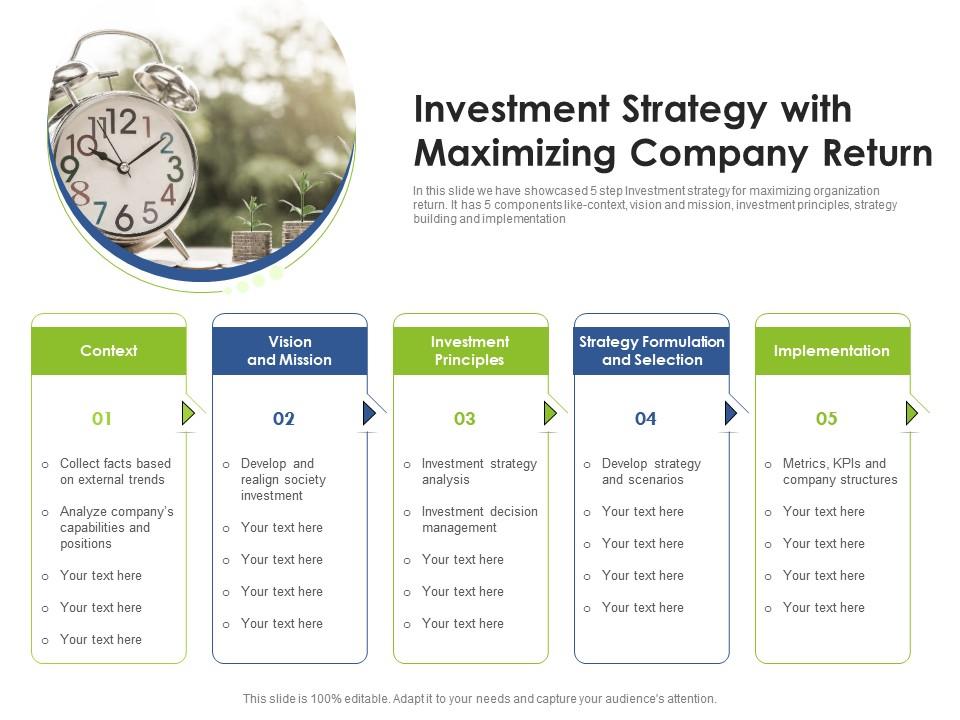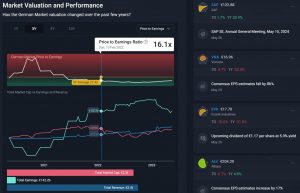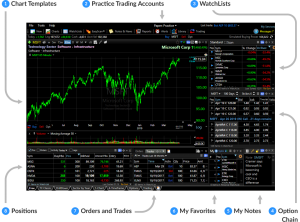
Types of Investment Strategies

Choosing the right investment strategy is crucial for business growth and success. Different strategies cater to varying risk tolerances, financial goals, and business lifecycles. Understanding the nuances of each approach allows businesses to make informed decisions that align with their overall objectives. This section explores five common investment strategies, analyzing their associated risks and rewards, and considering their suitability for different business types.
Five Investment Strategies for Businesses
Businesses can pursue a variety of investment strategies, each with its own set of advantages and disadvantages. The optimal strategy depends on factors like the business’s size, industry, risk appetite, and long-term goals.
| Strategy Name | Risk Level | Reward Potential | Suitable Business Type |
|---|---|---|---|
| Growth Investing | Medium | Medium to High | Established businesses with potential for expansion; startups with strong growth potential. |
| Value Investing | Low to Medium | Medium | Mature businesses with undervalued assets or strong fundamentals; businesses undergoing restructuring. |
| Income Investing | Low | Low to Medium | Businesses seeking stable returns; businesses with predictable cash flows. |
| Speculative Investing | High | High | High-risk, high-reward businesses in emerging markets or industries; businesses with disruptive technologies. |
| Defensive Investing | Low | Low | Businesses prioritizing capital preservation; businesses operating in stable, predictable industries. |
Venture Capital and Angel Investing for Startups
Venture capital and angel investing are crucial funding sources for startups. Venture capital firms typically invest larger sums in exchange for equity, often requiring significant growth potential. Angel investors, on the other hand, are typically high-net-worth individuals who provide smaller amounts of capital, often in earlier stages of a company’s development. Both offer valuable financial resources but also involve significant risks, as many startups fail.
Successful ventures, however, can yield substantial returns for investors. For example, the early investment in Google by Sequoia Capital demonstrated the high reward potential, while many other dot-com investments from that era illustrate the inherent risk.
Decision-Making Process for Choosing an Investment Strategy
The selection of an appropriate investment strategy requires careful consideration of several factors.
Assessing Investment Opportunities

Successful investment in business ventures hinges on a thorough assessment of potential opportunities. This involves not only identifying promising prospects but also rigorously evaluating their viability and potential return on investment. A robust assessment process minimizes risk and maximizes the chances of a successful outcome.
Methods for Evaluating Potential Return on Investment (ROI)
Several methods exist for evaluating the potential ROI of a business opportunity. Choosing the right method depends on the nature of the investment and the available data. A combination of approaches often provides the most comprehensive picture.
- Payback Period: This method calculates the time it takes for an investment to generate enough cash flow to recover its initial cost. A shorter payback period indicates a quicker return on investment. For example, an investment with a payback period of two years is generally considered more attractive than one with a payback period of five years, all else being equal.
- Return on Investment (ROI): This classic metric expresses the gain or loss of an investment as a percentage of the cost of the investment. It’s calculated as (Net Profit / Cost of Investment)
– 100. A higher ROI indicates a more profitable investment. For instance, an ROI of 25% suggests a strong return. - Internal Rate of Return (IRR): The IRR is the discount rate that makes the net present value (NPV) of an investment equal to zero. It represents the expected annual rate of return on an investment. A higher IRR is generally preferred. Consider an investment with an IRR of 15% compared to one with an IRR of 10%; the former is more appealing.
- Discounted Cash Flow (DCF) Analysis: This method considers the time value of money by discounting future cash flows back to their present value. This allows for a more accurate comparison of investments with different cash flow patterns. DCF analysis is particularly useful for long-term investments.
- Profitability Index (PI): The PI is the ratio of the present value of future cash flows to the initial investment. A PI greater than 1 indicates that the investment is expected to generate more value than its cost. For example, a PI of 1.2 suggests a 20% increase in value over the initial investment.
The Importance of Due Diligence in Investment Decision-Making
Due diligence is a critical step in the investment process. It involves a thorough investigation of all aspects of the investment opportunity to identify potential risks and opportunities. This process helps mitigate potential losses and ensures that the investment aligns with the investor’s goals and risk tolerance. Neglecting due diligence can lead to significant financial losses. A comprehensive due diligence process might include reviewing financial statements, conducting background checks on management, and assessing market conditions.
Calculating the Net Present Value (NPV) of an Investment
The Net Present Value (NPV) is a crucial metric for evaluating the profitability of an investment. It calculates the difference between the present value of cash inflows and the present value of cash outflows over a period of time. A positive NPV indicates that the investment is expected to generate a return greater than the required rate of return.
NPV = Σ [Ct / (1 + r)t] – C0
Where:
Ct = Net cash inflow during the period t
r = Discount rate (or rate of return)
t = Number of time periods
C0 = Initial investment
For example, consider an investment requiring an initial outlay of $100,000 and expected to generate net cash inflows of $30,000 annually for five years. Using a discount rate of 10%, the NPV can be calculated.
Key Financial Metrics Used to Assess Investment Viability
Several key financial metrics are used to assess the viability of an investment. These metrics provide a quantitative assessment of the investment’s potential profitability and risk.
- Net Present Value (NPV): As discussed above, a positive NPV indicates a profitable investment.
- Internal Rate of Return (IRR): A higher IRR suggests a more attractive investment.
- Return on Investment (ROI): A higher ROI signifies a greater return on the initial investment.
- Payback Period: A shorter payback period indicates a quicker return of the initial investment.
- Profitability Index (PI): A PI greater than 1 signifies that the investment’s present value exceeds its cost.

